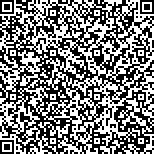| 本文已被:浏览 1552次 下载 736次 |

码上扫一扫! |
|
|
| 基于无人机影像的作物土壤水分亏缺反演方法 |
|
陈 震1,2,3, 马春芽1,2,3, 孙 浩1,2,3, 程 千1,2,3, 段福义※1,2,3
|
|
1.中国农业科学院农田灌溉研究所,河南新乡453002;2.农业农村部节水工程重点实验室,
河南新乡,453002;3.河南省节水农业重点实验室,新乡453002
|
|
| 摘要: |
| 【目的】基于无人机影像进行作物土壤水分亏缺反演研究有利于提高农田集约化管理 效率,提升农田精准灌溉水肥空间分布信息高效获取技术水平。【方法】文章以冬小麦为例, 采用大型喷灌机变量灌溉的方式,设置3个灌溉水平和6个不同施肥处理;利用无人机携带 热红外、可见光、多光谱相机,规划航线飞行采集影像数据,结合田间布点取样校准,反演 冬小麦长势;根据获取的无人机遥感影像,经图像拼接、数据提取等处理,获得田间不同试 验小区光谱数据,计算植被指数,反演水肥指标,构建土壤水分反演模型。【结果】水分亏 缺情境下,灌水的多少直接影响冬小麦的生理生长指标,灌水量越多,冬小麦株高和叶面积 发育越好;3个灌溉水平处理间冠层温度差异在2~5℃;植被指数与灌溉处理一致性较好, 而不同的施肥处理反演效果不理想。【结论】热红外影像反演作物冠层温度计算得到的作物 水分亏缺指数可以展现冬小麦作物水分亏缺空间分布,作物水分亏缺指数与土壤水分平均含 水率有很好的相关性。无人机遥感在田间水肥管理的应用有效提升了大田时空数据的获取能 力,下一步应开展水肥时空变异性研究,探讨水肥精准施用技术,从理论和技术两方面着手提 升精准管理水平。 |
| 关键词: 变量灌溉 热红外 植被指数 土壤水分 |
| DOI:10.12105/j.issn.1672-0423.20190403 |
| 分类号: |
| 基金项目:国家重点研发计划“集约化农田多功能喷灌技术与装备”(2016YFC0400104);中国农业科学院重大产出培育项目 “天空地农田精准灌溉信息智能获取技术与准备研发”;河南省科技研发专项“无人机光谱感知喷灌机变量喷洒水 氮空间变异性研究”(192102110095);中央级公益性科研院所基本科研业务专项(FIRI 2017-20,FIRI 2019-05-04) |
|
| The inversion methods for water stress of irrigation crop based on unmanned aerial vehicle remote sensing |
|
Chen Zhen1,2,3, Ma Chunya1,2,3, Ma Chunya1,2,3, Cheng Qian1,2,3, Duan Fuyi※1,2,3
|
|
1.Farmland Irrigation Research Institute,Chinese Academy of Agricultural Sciences,Henan Xinxiang 453002,China;2.Key Laboratory of Water-saving Agricultural Engineering,Ministry of Agriculture and Rural Affairs,Henan Xinxiang 453002,China;3.Key Laboratory of Water-saving Agriculture Henan Province,Xinxiang 453002,China
|
| Abstract: |
| [ Purpose]This research aims to improve the level of intensive management of farmland and upgrade the efficient acquisition technology of the spatial distribution information of precision irrigation water fertilizer in farmland. [Method]Taking winter wheat as an example, the lateral-moving sprinkler irrigation machine was applied,and the variable irrigation was set up 3 different irrigation water and 6 different fertilization treatments. Flight planning was carried out to collect image data with the UAV system,including thermal infrared,visible light and multispectral camera. The UAV system images were combined with field sampling calibration to inverse winter wheat growth. The obtained remote sensing image from UAV were processed for image mosaic,and many vegetation indices were calculated by data extraction processing to obtain the field different treatments spectral data. After that,the water fertilizer index was inverted to build soil moisture inversion model. [Result]In the situation of water stress,the amount of water irrigation directly affects the physiological growth index of winter wheat. The canopy temperature difference among the three variables was 2~5℃. The consistency of crop index and irrigation treatment was good,but the inversion effect of different fertilization treatment was not ideal. [Conclusion]The crop water stress index,which is obtained from the thermal infrared image and is calculated from the canopy temperature,can show the spatial distribution of winter wheat canopy water stress. The consistency of crop moisture deficiency index and soil moisture construction model is good,but the correlation of water fertilizer information under different fertilization treatment conditions of spectral image data inverse is not significant. The UAV system remote sensing will be applied to the field water fertilizer management,which is a very effective mean to obtain field space-time data. The next step should focus on the theoretical model accuracy of water fertilizer inversion,the collection of continuous thermal infrared and high-spectral data images,and the multi-band image data joint construction of crop index model,in order to explore different water and fertilizer sensitive indices. Meanwhile,water and fertilizer spatial and temporal distribution should be paid more attention. After that,precise irrigation of theory and technology will be used to enhance the level of precision agriculture management. |
| Key words: variable rate irrigation infrared thermal image vegetation indices soil water content |